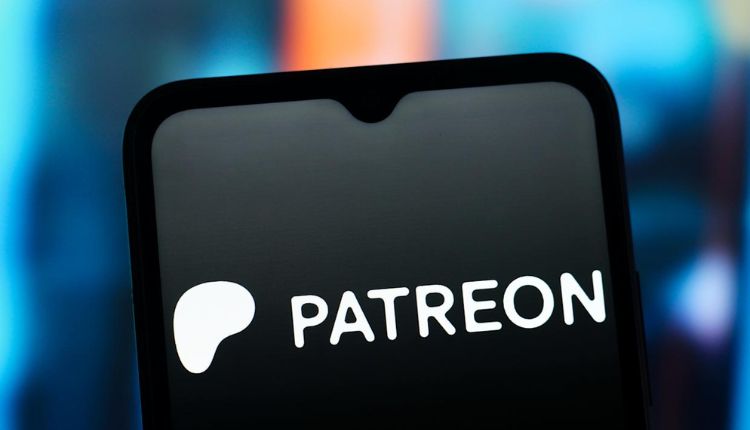One such phenomenon gaining attention in online areas is “Coomer Party Su.” Though difficult to understand to many, it represents a curious combo of internet meme ways of life, humour, and social remarks. Rooted in the term “coomer”, which has its very own layered history, the addition of “party” and “su” introduces an enigmatic layer that internet users are beginning to get to the bottom of. To fully understand the upward push of Coomer Party, it’s vital to discover its meaning, origins, effect, and the manner in which it displays cutting-edge net behaviour.
- Origins and Meaning Behind Coomer Party Su
- The Culture Surrounding Coomer Identity
- Meme Evolution and Linguistic Play
- Digital Communities and Shared Humor
- Criticism and Concerns About Coomer Culture
- The Role of Anonymity in Meme Culture
- Coomer Party Su in Popular Platforms
- How the Phrase Reflects Internet Generation Trends
- Wrapping It Up
Origins and Meaning Behind Coomer Party Su
The term “coomer” at the start emerged from meme culture, frequently depicting an exaggerated male character addicted to content material. It became a stereotype of overindulgence and self-deprecating humour, often used in forums like 4chan, Reddit, and niche meme pages. “Party” in this context no longer seeks advice from a real event but a gathering of like-minded virtual personalities or the celebratory overuse of a topic. The “su” component stays a subject of discussion amongst users, but it’s frequently interpreted as both a stylised suffix and an abbreviation with layered meme cost.
Coomer Party Su, as a phrase, features like an insider shaggy dog story that is shared within a network. Its layered nature makes it humorous, ironic, and now and again even satirical. It speaks to a technology that’s hyper-aware of its virtual habits, often poking fun at itself while constructing a self-maintaining meme culture.
The Culture Surrounding Coomer Identity
To understand Coomer Party Su, one ought to delve into the idea of “coomer” itself. The coomer meme emerged within the late 2010s and became a part of the broader “Wojak” meme family. The coomer man or woman is often proven with poor posture, an unkempt appearance, and a steady need to eat digital grown-up content material. While it started out as a funny stereotype, it steadily took on deeper tones of complaint about net addiction, dopamine cycles, and escapism.
Coomer Party seems to be a more chaotic or celebratory expression of this identity. It’s less about the man or woman conflict and more about shared experience and exaggerated humour. The term has grown beyond its preliminary photograph to symbolise a self-conscious digital tradition that mocks its own excesses.
Meme Evolution and Linguistic Play
One of the most captivating factors of Coomer Party Su is the way it exemplifies the internet’s love for remixing language and visual content material. The phrase itself is a linguistic mash-up—nonsensical before everything looks, but significant inside specific digital ecosystems. The internet has continually been fertile ground for absurdist humour, and Coomer Party suits it properly. Its randomness is its energy, allowing it to conform freely, adapt to new memes, and keep viral ability.
Users often remix Coomer Party in numerous formats, such as picture macros, GIFs, TikToks, and Discord server nicknames. It lives in spaces wherein customers recognise the language of irony, exaggeration, and layered meanings. Even those who don’t completely apprehend the meme participate by means of sharing it, reacting with humour or confusion, similarly fuelling its virality.
Digital Communities and Shared Humor
What makes Coomer Party Su thrive is the shared information inside net groups. Forums, meme pages, Discord servers, and niche subreddits function as breeding grounds for such content. The meme functions nearly like a social password—in case you get it, you’re in. If not, you’re on the out of doors, searching in. This exclusivity adds to its enchantment and mystique.
Digital communities often create these in-jokes to bond customers via humour and shared absurdity. Coomer Party acts as one such binding agent. It fosters interaction, meme advent, or even online “occasions” in which customers fake having a good time with the concept of a coomer-themed party. These interactions are probably merely satirical, but they help beef up the network and its identification.
Criticism and Concerns About Coomer Culture
While memes like Coomer Party Su may additionally seem innocent and funny, there is a layer of concern underlying the lifestyle. Critics argue that the meme lifestyle surrounding coomerism may additionally, every now and then, trivialise critical issues like digital dependency, loneliness, or over-reliance on escapism. Although the humour is self-aware, it risks normalising behaviours that might in any other case be considered tricky.
Furthermore, the overpowering saturation of coomer memes, inclusive of Coomer Party, can drown out extra constructive or nuanced conversations about intellectual health, wholesome virtual habits, and the importance of offline interaction. While the meme itself isn’t directly dangerous, its ubiquity can make contributions to a digital echo chamber wherein immoderate behaviors are dealt with as jokes as opposed to issues worth addressing.
The Role of Anonymity in Meme Culture
Another key detail regarding the unfolding of the Coomer Party is the anonymity afforded with the aid of online systems. Users can engage in absurdity, create meme variations, and propagate difficult-to-understand terms without attaching their actual international identification. This freedom allows the meme to flourish in areas where irony and detachment dominate.
The anonymity additionally allows users to mock their very own flaws without social consequences. In a Coomer Party Su meme, the individual guffawing is often also the difficulty of the joke. This shape of self-deprecation has come to be a trademark of Gen Z humour and lifestyle in general. It’s both cathartic and communal—a manner to snigger at shared shortcomings while nevertheless feeling part of something larger.
Coomer Party Su in Popular Platforms
Though the meme is rooted in underground internet culture, lines of Coomer Party Su have made their way into mainstream systems like Twitter, TikTok, and Instagram. Short-form content creators use the time period as a part of skits, meme reviews, or fashion commentary. Its utilisation may additionally differ slightly from its starting place; regularly simplified for mass, it still carries the chaotic strength of its supply communities.
Meme influencers and area-of-interest virtual artists have also taken to incorporating the word into their innovative initiatives. From absurdist digital artwork to parody tune films, Coomer Party has found a place in more than one codec. It speaks to the net’s potential to remix thoughts without end whilst preserving a thread of recognisable humour.
How the Phrase Reflects Internet Generation Trends
The upward push of Coomer Party Su is more than simply every other meme—it reflects a generational sample. Today’s net users prize irony, in-jokes, and linguistic chaos. They grew up in a world of fast facts, meme overload, and countless content options. Phrases like Coomer Party aren’t simply nonsense; they represent a cultural reaction to overwhelming digital publicity.
This technology uses memes to express frustration, humour, and even apathy. Coomer Party, as a word, encapsulates the surreal nature of modern-day online existence. It mirrors how users deal with boredom, dependency, and the regular flux of internet trends through humour and shared absurdity.
Wrapping It Up
Coomer Party Su may additionally appear to be simply another web story at first; however, a closer look reveals its place within a bigger cultural framework. It blends humour, identification, social statement, and network interaction in a manner that even the simplest virtual areas can obtain. While its meaning would possibly stay fluid, its effect is clear in the manner it continues to unfold and evolve across structures.
For the unexpected ones, Coomer Party might be puzzling or meaningless. But for virtual natives, it’s any other expression of the ever-shifting language of the net—one that invites laughter, critique, and interest. Whether it stays a passing fashion or grows right into a more fully described idea, it’s a clean example of how internet culture keeps creating new methods to connect, laugh, and mirror.





